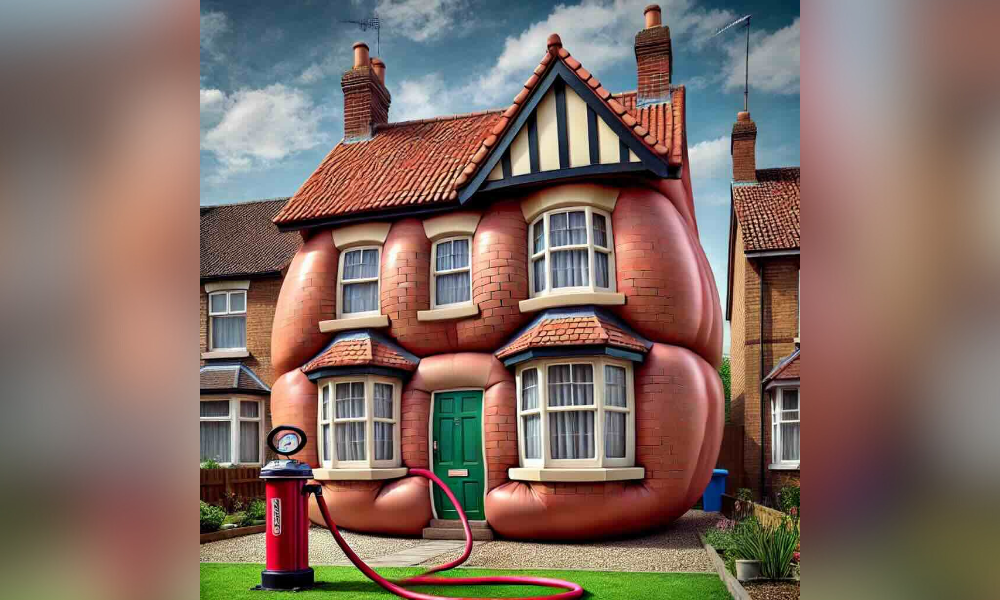Significant growth predicted to push prices higher – London? Not so much…

It’s been a tough few years, but finally – Labour budget aside – things may be looking a little better – unless you’re looking at affordability, a new report using data from Oxford Economics and Nationwide Building Society crunched by Savills suggests.
The housing market in the UK is projected to see significant growth over the next five years. Property prices are expected to climb sharply meaning clients will have to borrow more to buy - leaving affordability a key concern for prospective buyers.
New reports from property firms Savills and JLL indicate that average house prices will continue to rise faster than inflation and wages, creating a challenging environment for first-time buyers and renters alike.
Read more: Landlords take a hit in Rachel Reeves' Budget – reaction pours in
Savills predicts that the average house price will increase by 23.4%, or £84,000, by 2029, pushing the typical UK home value from £358,000 to around £442,000. This growth forecast aligns with JLL’s estimate of a 20% rise in property prices over the same period, significantly outpacing the Office for Budget Responsibility’s predicted 11.6% increase in consumer price inflation and 14% growth in average wages.
Lucian Cook, Savills’ head of residential research, said that easing mortgage rates are playing a central role in boosting buyer confidence.
“The direction of mortgage rates has been key to buyer decisions over the past two years, and decreased monthly mortgage costs are now feeding through into improved confidence among prospective buyers,” he said. However, Cook cautioned that market fluctuations and potential changes in property taxes could still impact prices in the short term.
Emily Williams, director of research at Savills, added that the number of people moving home is expected to increase in the latter half of the forecast period, as rates stabilise and homeowners benefit from equity growth. However, she warned that first-time buyers will face ongoing difficulties due to the withdrawal of government support schemes and tighter regulations in the rental sector. "The number of first-time buyers active in the market is expected to stay below pre-pandemic levels," she explained, noting that increased surcharges on second homes may also discourage buy-to-let investors.
The outlook isn’t much brighter for renters. JLL anticipates that rental costs will grow by 17% by 2029, outpacing wage growth and continuing to strain affordability. JLL’s Marcus Dixon highlighted the persistence of those challenges, especially in the rental market, where price increases have often exceeded wage growth. "The challenge around affordability, particularly in the rental market, is sadly going to continue in the short to medium term," Dixon stated.
Read more: Borrowing costs rise as Reeves budget fears spread
Meanwhile, Sir Keir Starmer’s pledge to tackle the housing crisis by building 1.5 million homes during this Parliament faces obstacles. Although the recent Budget allocated £5 billion toward housing initiatives, including £500 million for the Affordable Homes Programme, experts are sceptical about achieving these ambitious targets. JLL estimates only 1.2 million new homes will be built by 2029, falling short of Labour’s target by approximately 300,000 homes.
“A new government with ambitious plans for housebuilding could mean future growth prospects differ from the recent past,” JLL noted, but cautioned that bureaucratic delays and material shortages would make immediate expansion challenging. Dixon added: “We can’t suddenly magic all of these new homes.”
Read more: Good property news for everyone – less so, London
The rental market is also expected to see shifts, with a decline in buy-to-let investors likely due to recent tax changes. The government’s decision to raise the lower rate of capital gains tax and increase stamp duty for rental property purchases is expected to discourage landlords, further reducing rental supply and potentially pushing up costs for tenants.
While property prices in the North West, North East, and Yorkshire are expected to see the most growth—forecast by Savills to rise by nearly 30% over the next five years—the high cost of borrowing continues to overshadow affordability gains in other regions. In London and the South East, where average income multiples remain higher than elsewhere, housing market growth will likely be constrained as buyers struggle to afford high deposits and monthly payments, despite recent rate drops.
Savills’ predictions for house price increases over the next five years (not including new build homes):
North West, 29.4%
North East, 28.2%
Yorkshire and the Humber, 28.2%
West Midlands, 26.4%
Scotland, 25.8%
Wales, 25.2%
East Midlands, 24.6%
South West, 21.6%
East of England, 19.9%
South East, 17.6%
London, 17.1%



